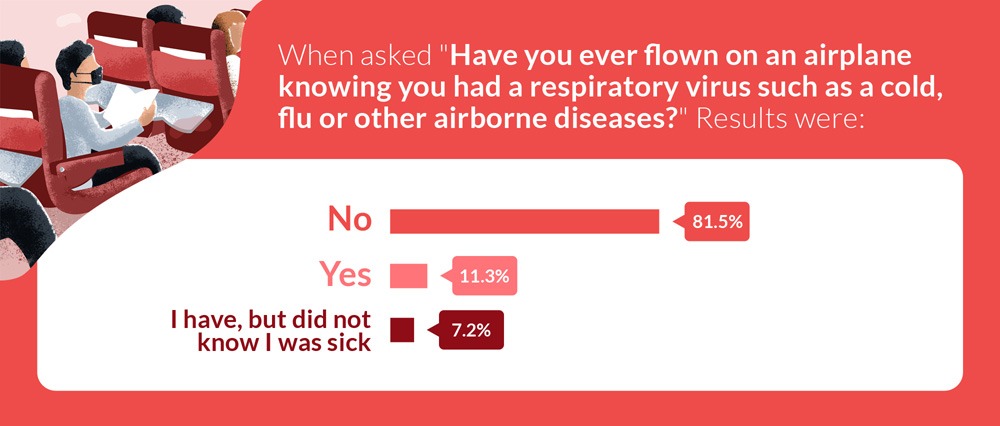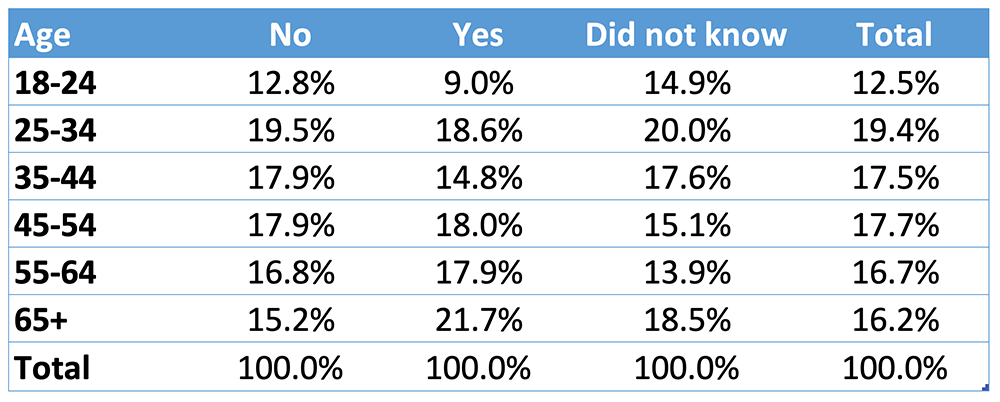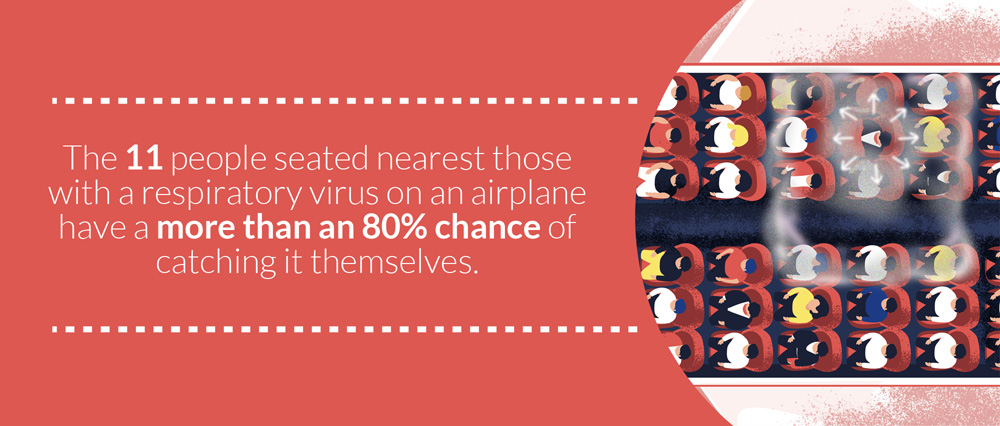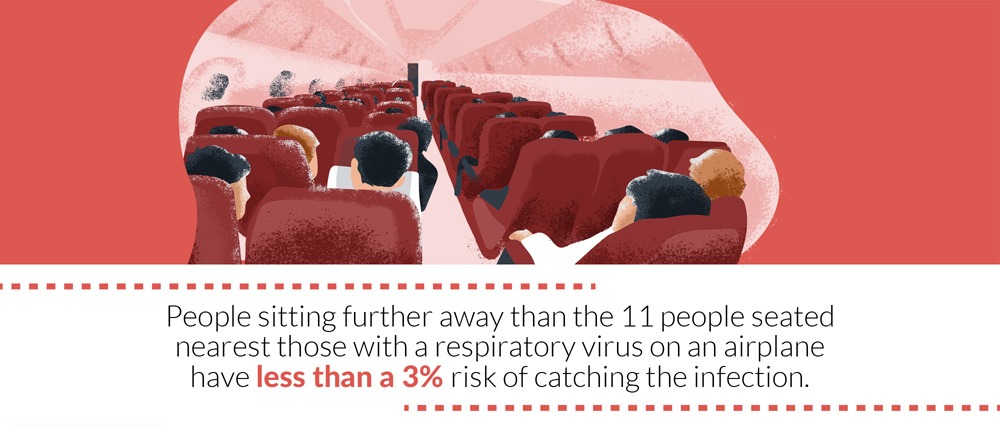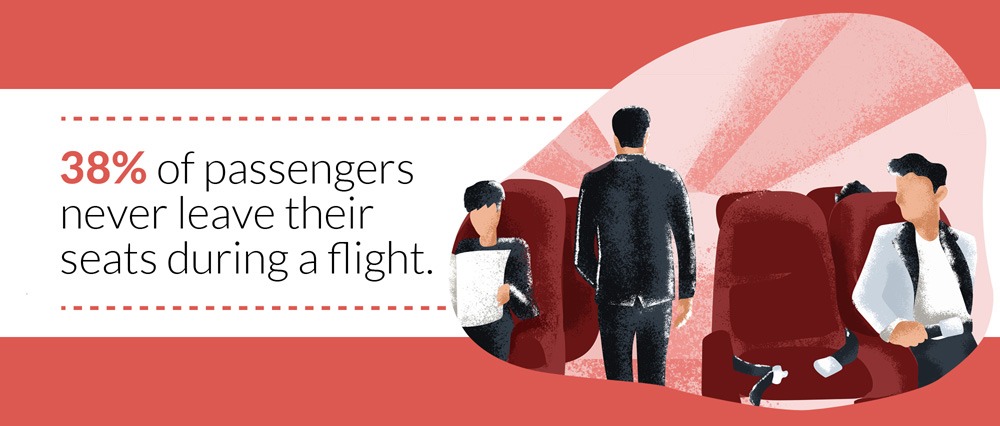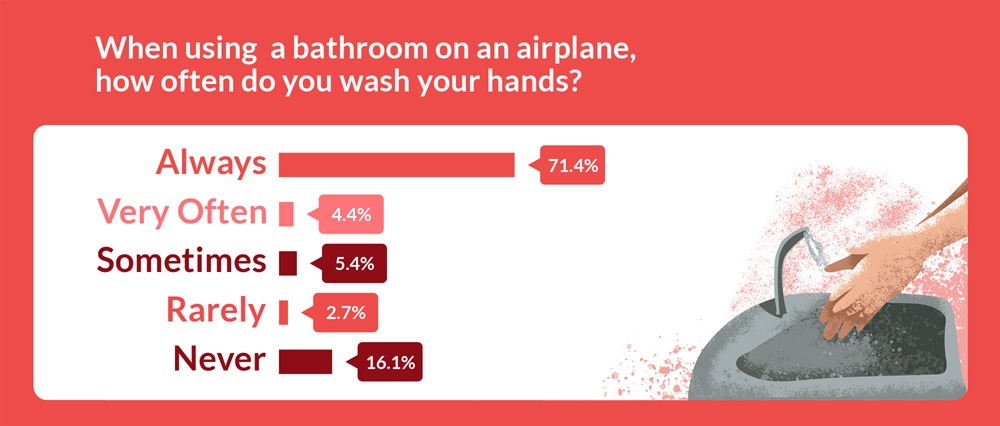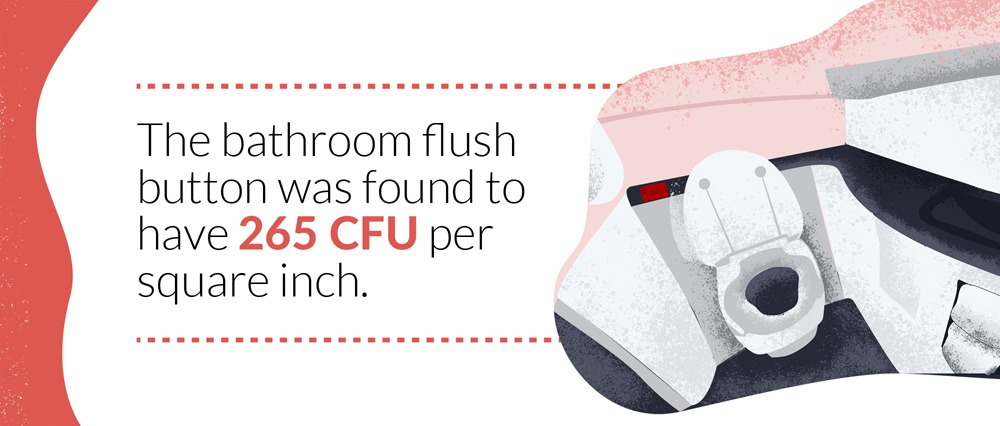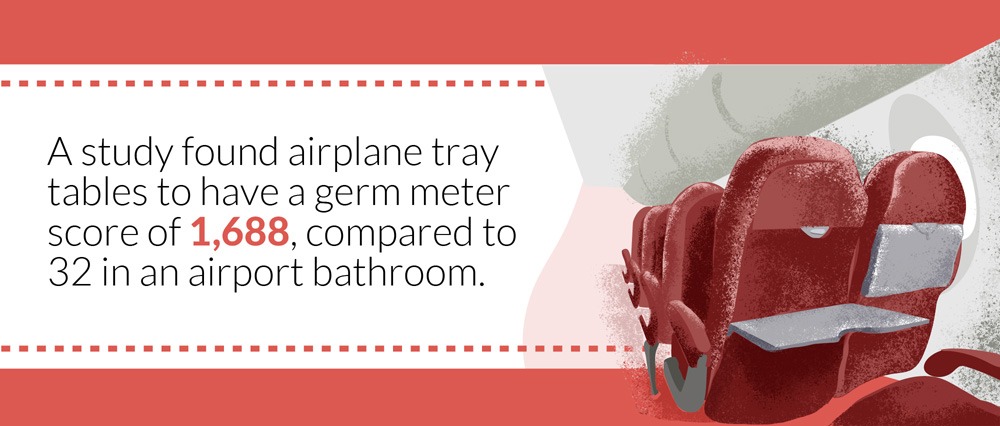Flying may not be the most enjoyable experience, but we love the freedom and convenience this transportation method provides.
But one major problem on airlines is the spread of germs and sickness.
While airlines do take preventative measures to keep passengers flying clean, there’s only so much they can do. A lot relies on the habits of your fellow passengers.
Survey 1: Almost 20% of Passengers Have Flown Sick
We were interested in how the public limits the spread of germs, and the results are shocking: close to one-fifth of passengers have flown sick on a plane, either knowingly or unknowingly, according to a new survey from travel search engine Reservations.com.
Our online survey asked 2,000 internet users “Have you ever flown on an airplane knowing you had a respiratory virus such as a cold, flu, or other airborne diseases?”
Survey Results
- No: 81.5%
- Yes: 11.3%
- I have, but did not know I was sick: 7.2%
Whether these results shock you or not, the fact of the matter is that it’s likely you’ll have a decent amount of sick passengers on any plane you board.
Breaking it down by gender, we can see that men are more likely to fly sick:
And looking at age cohorts we can see that those 65+ have flown sick more often than other age ranges, although this can partially be explained by number of total flights flown in a lifetime:
But is flying on a plane with other sick passengers dangerous? It depends on where you’re sitting. Research from Proceedings of the National Academy of Sciences found that the eleven closest people seated near the sick passenger had an 80% chance of becoming infected themselves. The researchers ran a network-based transmission model and simulation to estimate chances of becoming infected by an airborne disease.
Even more surprising from the same study, however, is the small chance of becoming infected if not seated near the sick passenger. Sitting further away than one of the eleven closest? Your risk plummets to just a 3% chance of becoming infected. This is good news – but a lot depends on the luck of the draw and your seat assignment.
One factor that affects transmission rates is the movement of passengers – sick and healthy – throughout the cabin. This increases proximity and contact among passengers. Research found:
- 38% of passengers never left their seats
- 38% of passengers left once
- 13% left twice
- 11% left more than two times
Those in aisle seats had a higher proximity to passengers moving throughout the cabin, and therefore potential contact with sick passengers. The takeaways may be to try not to move throughout the cabin, nor sit in the aisle, to reduce your chance of contact.
Survey: 19% of Passengers Don’t Always Wash their Hands on an Airplane
In addition, we ran an online survey of 1,000 adults and found that close to 19% don’t always wash their hands after going to the bathroom. This shocking number can be a contributing factor to the spread of disease on airplanes.
Survey Results
- Always: 71.4%
- Very Often: 4.4%
- Sometimes: 5.4%
- Rarely: 2.7%
- Never: 16.1%
Unsurprisingly, men are the main culprits in not washing hands:
We also see a trend towards younger cohorts representing a larger share of those rarely or never washing hands:
We dug into a few studies and our research found some additional shocking statistics regarding bacteria on different surfaces throughout the airplane. The bathroom flush button was found to have 265 CFU per square inch, which sounds high, but other areas of the plane have much higher counts.
Although the bathroom flush button would appear to be among the dirtiest surfaces on an airplane, airplane tray tables are worse, with a germ meter score of 1,688 compared to just 32 in an airport bathroom.
Survey Methodology
The respiratory virus online survey polled 2,000 adult internet users in the United States from August 26 to 28, 2019 via the Google Surveys platform. Responses were weighted using gender, age, and region to match the demographics of the national internet population as estimated by the U.S. Census Bureau’s Current Population Survey. View full survey data here.
The handwashing online survey polled 1,000 adult internet users in the United States from August 26 to 28, 2019 via the Google Surveys platform. Responses were weighted using gender, age, and region to match the demographics of the national internet population as estimated by the U.S. Census Bureau’s Current Population Survey. View full survey data here.
Google Surveys statement: “We validate results against outside data, such as government-issued statistics, and results are as accurate or more accurate than other online platforms. Several analyses have found Google Surveys to be a useful survey tool. Read the whitepaper to learn more or see the analysis done by the Pew Research Center.”
Reserve your next hotel with Reservations.com for experiential travel planning that is stress-free!
Sources:
- https://www.pnas.org/content/115/14/3623
- https://bmcinfectdis.biomedcentral.com/track/pdf/10.1186/s12879-018-3150-5
- https://www.usatoday.com/story/travel/nation-now/2018/04/05/when-hand-washing-isnt-enough-germ-expert-reveals-grossest-places-planes/489163002/
- https://www.wsj.com/articles/SB10001424052970204058404577108420985863872
- https://www.cnn.com/travel/article/airplane-airport-germs/index.html

